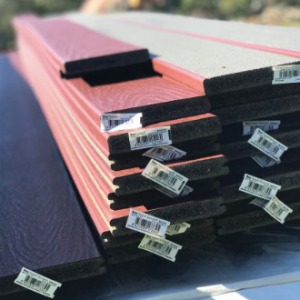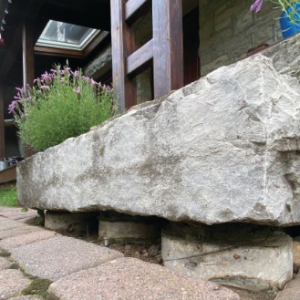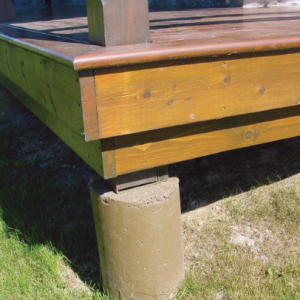
Carey Fredericks
The 50-Year Deck
Canadian Contractor decks home renovationWin more work selling design details that double deck life.
When it comes to winning jobs, it all comes down to value. The more value you can offer potential clients, the more power you’ll have for winning jobs at higher prices. Decks are low-hanging fruit when it comes to this. Most decks are built with no more attention to longevity that pressure treated lumber and perhaps some joist tape. With that recipe a deck will last 10, 20 or maybe 25 years at the most. But put a handful of little-used deck details into practice and the decks you build can last 50 years at only slightly more cost. That’s super-appealing to some clients, and a huge selling point, as I’ll show you here.
Build for drainage and drying
The problem with typical decks is the way wooden frames are put together. Most have way too much wood-to-wood contact area. The larger the area of contact, the longer it takes for the area to dry. And the longer it takes to dry, the more welcoming the area is to rot. Things get even worse when insects such as earwigs move into wood-to-wood contact zones, depositing droppings into the moist environment, triggering even faster decay because of the nutrients present. Composite beams made from four two-by-10s spiked together; deck boards meeting and touching end-to-end; a tight fit between deck floor frames and house walls – all these common deck details seem insignificant while building, but they really matter 10 or 15 years down the road. Just because you use pressure-treated lumber or cedar doesn’t eliminate consequences. All wood eventually rots when it stays wet, and pressure treated lumber of the kind meant for above-ground use can turn to compost in 10 years under the wrong conditions. I’ve seen it happen.
Long-life deck framing features include rot-proof drainage spacers between boards of composite beams; periodic double joists so floor boards can be spaced on their ends; rot-proof drainage spacers between the deck frame and house wall.
Consider composites Sometimes the best thing you can do for a client is save them from their own bad ideas and, when it comes to decks, this applies to composites in a big way. More and more people are paying higher prices to have new decks built with plastic or composite lumber for the top surface. Even older decks are having wooden boards removed and replaced with composites to reduce ongoing maintenance. One important part of the 50-year deck is a walking surface that doesn’t need to be refinished every two or three years. There’s also a new reason why selling clients on composites is easier than it used to be.
Sometimes the best thing you can do for a client is save them from their own bad ideas and, when it comes to decks, this applies to composites in a big way. More and more people are paying higher prices to have new decks built with plastic or composite lumber for the top surface. Even older decks are having wooden boards removed and replaced with composites to reduce ongoing maintenance. One important part of the 50-year deck is a walking surface that doesn’t need to be refinished every two or three years. There’s also a new reason why selling clients on composites is easier than it used to be.
Typically speaking, synthetic deck lumber can be somewhat more expensive than deck wood, but not nearly as much more as in years past. As you’re talking to clients about synthetic deck materials, be sure to mention that in a sense the purchase price of these materials also includes all the finishing products and refinishing labour that would otherwise have to be spent with an ordinary wooden deck. It’s a pay-now-enjoy-later proposition, and costs are more reasonable when looked at this way. Just don’t think that “maintenance-free” deck materials get your clients out of all maintenance chores. Explain that cleaning is still needed and sometimes removal of moss and lichen.
Don’t let your stairs sink The job of supporting the bottom end of deck stairs might seem simple enough, but looks can be deceiving, especially here in Canada with our seasonal freeze-thaw cycles. That’s because sooner or later things sink into the soil. Even firm soil has a tendency to yield when something is resting on it all the time. This is why a concrete pier foundation is the best option for supporting the bottom end of your deck stairs. Bore down below the frost line with a post hole auger on each side where the bottom of the stairs will sit, put a cardboard form tube into each hole, cut the tubes so they’re the right height to support the bottom end of stairs, then fill the tubes with concrete all the way to the top. A solid, frost-proof support for your stairs is what you’ll get. It’s much better than a patio slab sitting on the soil.
The job of supporting the bottom end of deck stairs might seem simple enough, but looks can be deceiving, especially here in Canada with our seasonal freeze-thaw cycles. That’s because sooner or later things sink into the soil. Even firm soil has a tendency to yield when something is resting on it all the time. This is why a concrete pier foundation is the best option for supporting the bottom end of your deck stairs. Bore down below the frost line with a post hole auger on each side where the bottom of the stairs will sit, put a cardboard form tube into each hole, cut the tubes so they’re the right height to support the bottom end of stairs, then fill the tubes with concrete all the way to the top. A solid, frost-proof support for your stairs is what you’ll get. It’s much better than a patio slab sitting on the soil.
Don’t skimp on foundation There are two main ways to support a deck on the ground. You can set the posts to rest on top of the earth on concrete deck blocks, or you can build a below-grade foundation. Deck blocks can work fine on soils that don’t rise and fall with frost, but they’re a risky choice for many Canadian
There are two main ways to support a deck on the ground. You can set the posts to rest on top of the earth on concrete deck blocks, or you can build a below-grade foundation. Deck blocks can work fine on soils that don’t rise and fall with frost, but they’re a risky choice for many Canadian
building sites. Concrete piers poured on site into cardboard form tubes are a better option because they create support for your new deck that’s almost completely free from the hazards of freezing soil and the destructive movement this causes. Getting the bottom of your deck foundation piers down below the frost line keeps things solid in all seasons, but there’s more. One little-known trick involves making sure the frost can’t grip the outside of the concrete pier
and lift it up by friction. This is called frost jacking and a layer of black poly plastic wrapped
on the outside ensures this won’t happen. Staple the plastic on the cardboard form tubes before setting them in the ground, then install a hot-dipped galvanized post saddle in the top while the concrete is still wet.
Choose a wood finish pragmatically
Wooden decks are big, and even a beautiful deck will turn into a maintenance nightmare if
finishing and refinishing of the wood rules your client’s life. That’s why you must never choose a
deck finish based on looks alone. Choose a deck finish based on what it will be like to live with.
So what makes the right deck finish?
Appearance, quality and a maintenance regime your client can live with. Generally speaking, the more opaque the finish, the longer it lasts. The best clear water repellent treatments have the shortest working life – about 12 to 18 months before refinishing is required. Paint-like deck finishes last as long as five years. The best transparent, coloured deck finishes last somewhere in between. The easiest option involves not finishing your deck at all, or spraying it with a one-time treatment that weathers the deck evenly within hours, and never needs attention again. My
favourite is something called Ecowood Treatment.
Have you noticed that sometimes a few minutes of the right kind of talking to clients can trigger more revenues than hours spent using a hammer, saw and nail gun? Sell your deck clients on the superior value of the 50-year deck concept and you’ll enjoy better work and better profits.

Leave a Reply